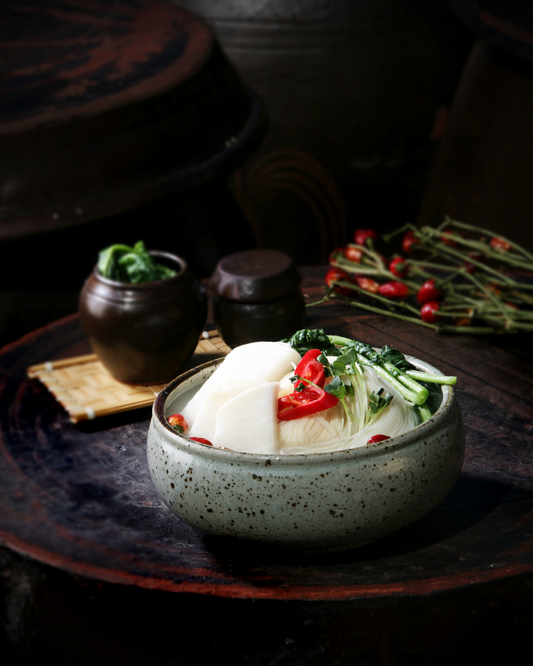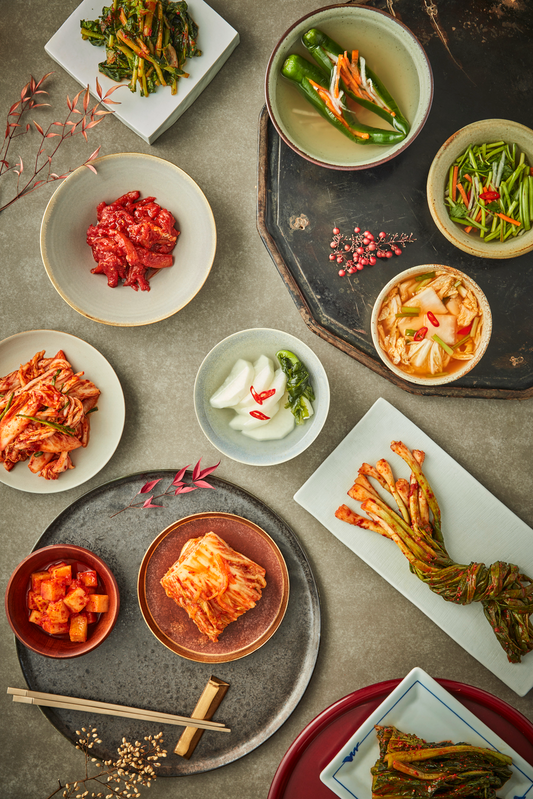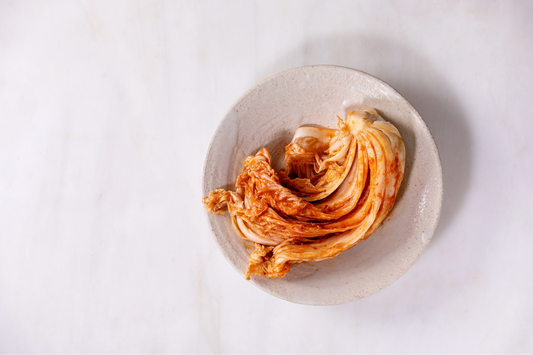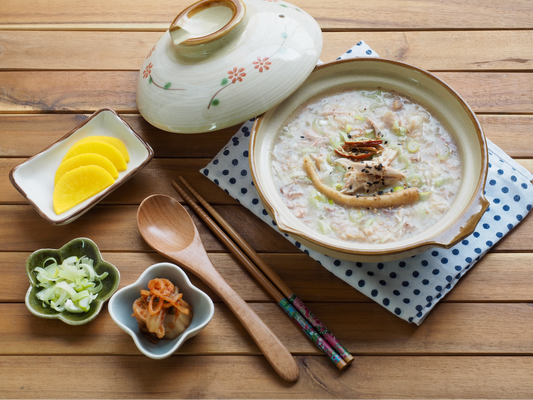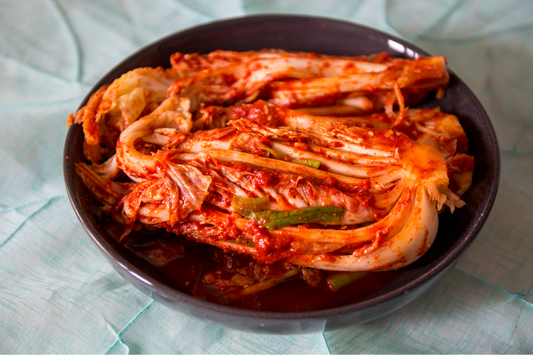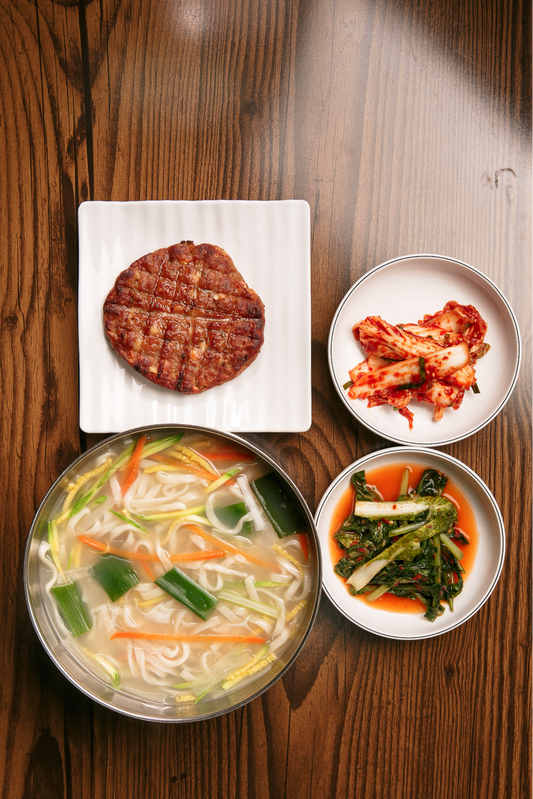Ever wondered why homemade kimchi is so special? It's because of the old techniques and ingredients passed down through generations. Myung Ja Cho, a 71-year-old expert, has spent her life perfecting her recipe. She learned from family and friends to make a truly authentic Korean dish.
Making great kimchi is an art that needs patience, practice, and a deep understanding. From picking the freshest ingredients to finding the right flavor balance, every step is important. In this article, we'll explore the secrets of kimchi making. We'll share tips and tricks to help you make delicious kimchi at home.
Key Takeaways:
- Choosing high-quality, fresh ingredients is essential for making delicious kimchi.
- The kimchi making process involves salting the cabbage, preparing a flavorful marinade, and allowing for proper fermentation.
- Adjusting seasoning ratios and adding unique ingredients can help you create a kimchi that suits your taste preferences.
- Fermentation time and temperature play a crucial role in developing the desired level of funk and flavor in your kimchi.
- With patience and practice, anyone can master the art of making authentic, delicious kimchi at home.
Ingredient Preparation
Getting your ingredients ready is key to making tasty kimchi. Baechu kimchi, the most loved type, uses napa cabbage. Look for firm, heavy cabbages with bright green leaves and a yellow-green center. Avoid wilted or brown spots.
For a large batch, aim for a 5-6 pound (2.3-2.7 kg) napa cabbage.
Radish is also important, especially in kkakdugi (radish kimchi). Pick large, heavy daikon radishes with white and yellow bottoms and bright green stems. Steer clear of radishes with cracks or soft spots. Wash and cut the radish into thin matchsticks for added texture.

Choosing Fresh Ingredients
Other fresh ingredients like green onions, garlic, and ginger are also used. Choose firm, unblemished items with bright colors and fresh smells. Avoid wilted or moldy ingredients.
Gochugaru, or Korean red pepper powder, is crucial to the flavor and heat of kimchi. Sun-dried gochugaru from Korea is considered the best, as it has a deep, complex flavor and a bright red color.
Preparing Ingredients
To prepare napa cabbage, cut it in half lengthwise and remove the core. Cut each half into 2-inch pieces and place them in a large bowl. Sprinkle with Korean coarse sea salt or natural rock salt, about 1/2 cup for every 6 pounds of cabbage. Let it sit for 6-8 hours, until the leaves soften.
Rinse the cabbage under cold running water to remove excess salt. Drain and set aside.
For radish, peel and cut it into thin matchsticks, about 1/8-inch thick and 2-3 inches long. Mix with a small amount of salt and let it sit for about 30 minutes. Rinse and drain well before adding it to the kimchi mixture.
By selecting and preparing fresh ingredients well, your homemade kimchi will taste great. With practice, you can make kimchi as good as store-bought.

Seasoning Ratios
Making perfect kimchi is all about finding the right flavor balance. The seasoning ratios are key to this balance. You can adjust these ratios to fit your taste, making kimchi a flexible dish.
Basic Seasoning Ratios
A typical kimchi mix has gochugaru (Korean red pepper flakes), garlic, ginger, fish sauce, salted shrimp, sugar, and salt. Start with 1 cup of gochugaru, 10 tablespoons of garlic, 2 tablespoons of ginger, 1/2 cup of fish sauce, 3 tablespoons of salted shrimp. Add a bit of sugar and salt to taste.
Some recipes also include Asian pear or apple, and grated onions. These add sweetness and depth. Use 1 cup each of anchovy sauce, ground fruits, onions, and salted shrimp for every two layers of napa cabbage.
Adjusting Seasoning
While basic ratios are a good start, the real skill is in adjusting them. Some like it spicy, others milder. You can change the heat by adjusting the gochugaru.
Also, you can adjust sugar and salt based on the veggies' sweetness and the funkiness you want. Always taste the mix before fermenting to make any needed changes.
Jean, a passionate kimchi maker from Seoul, emphasizes, "Tasting and adjusting the seasoning throughout the kimchi-making process is key to achieving the perfect balance of flavors. Don't be afraid to trust your taste buds and make adjustments as needed."
Understanding basic seasoning ratios and adjusting them to your liking lets anyone make delicious kimchi. This way, you can enjoy the rich flavors and textures of this Korean favorite.

Utilizing a Quick Kimchi Pre-Made Sauce for Easy and Delicious Kimchi
If you're short on time but want kimchi's tangy, spicy taste, a quick kimchi sauce is perfect. It turns any veggie into a tasty kimchi dish in 45 minutes. This is great for making a small batch, unlike big kimchi recipes.
To make vegan kimchi sauce, mix gochugaru, garlic, ginger, onion, sugar, and salt. You can adjust these to suit your taste. This way, you can make more sauce when you need it.
"I love having my quick kimchi sauce ready to go in the fridge. Whenever I have leftover vegetables or want to add a kick to my meals, I can whip up a small batch of kimchi in no time. It's so convenient and satisfying!" - Sarah, a busy mom and kimchi enthusiast
Quick kimchi is very versatile. Unlike traditional kimchi, which uses napa cabbage, you can use it on many veggies. This makes it easy to keep your meals exciting and healthy.
So, when you're in a hurry but want kimchi's bold taste, try quick kimchi. With a few ingredients and little prep, you'll enjoy its health benefits soon.

Fermentation Process
The fermentation process is key to perfecting kimchi's flavors and textures. Studies show the best temperature for kimchi fermentation is between 50°F and 70°F. The ideal spot is 65°F, where Leuconostoc and Lactobacillus bacteria create a cheesy, buttery taste in nine days.
Fermentation Temperature
Fermentation temperature is crucial for kimchi's unique taste. At lower temperatures, like 39°F, kimchi ferments slowly and may grow mold. Higher temperatures, like 70°F, make kimchi bubbly and funky in six days. The best fermentation time is one to two weeks, depending on how tangy you like it.
Managing Fermentation
Managing kimchi fermentation is important for great results. The first couple of days are the most active, but fermentation goes on with different microbes. Check fermentation by looking for bubbles and tasting it. When it's sour enough, move it to the fridge to slow it down.
Open the jar now and then to let gasses out. Press down the kimchi to keep it in the brine. Understanding fermentation temperature and time, and managing the process, makes delicious kimchi full of probiotics. Eating fermented foods like kimchi helps your gut health and overall well-being.

Special Tips and Tricks
To make your kimchi even better, try a few special ingredients and techniques. These tips will boost the flavor, make it look and feel great, and keep it fresh in the fridge.
Adding Flavor
For a richer taste, add salted shrimp or fish sauce to your kimchi. These ingredients add a savory depth that goes well with the spicy gochugaru and tangy fermented veggies. Myung Ja Cho, a kimchi expert, suggests using Korean Canary fish sauce for the best flavor mix.
Appearance and Texture
The bright red color of kimchi comes from gochugaru, Korean red pepper flakes. It adds heat and color to the dish. To keep it crunchy, salt and drain the cabbage well before mixing. This step removes excess moisture, so the kimchi stays crunchy during fermentation.
Kimchi Refrigeration Tips
Store your homemade kimchi in glass or BPA-free plastic containers. Wrap it tightly with plastic wrap or put it in a sealed bag to avoid strong smells. Remember, kimchi is great at different stages. Young kimchi is perfect for salads or sandwiches, while older kimchi is great in stews, soups, and fried rice.
FAQ
What are the key ingredients for making delicious kimchi?
To make tasty kimchi, you need fresh napa cabbage, daikon radish, and gochugaru (Korean red pepper powder). Also, garlic, ginger, onion, fish sauce, salted shrimp, sugar, and salt are important. Using top-quality ingredients at the right time is key for great flavor and texture.
How do I prepare the cabbage and radish for kimchi?
Start by splitting the cabbage in half and salting it well. Let it sit for hours to remove water and soften the leaves. Then, rinse it well before mixing with the marinade. Cut the radish into thin matchsticks for extra texture and freshness.
Can I adjust the seasoning ratios in my kimchi recipe?
Yes, you can adjust the seasoning to your liking. You can change the salt and sugar amounts based on the cabbage and radish's sweetness and your desired funk level. Taste the mixture before fermentation to make any needed adjustments.
Is there a quick way to make kimchi without going through the entire process?
For a quick fix, use pre-made kimchi sauce. You can make it in large batches and freeze it for later. To make it vegan, skip the fish products and use gochugaru, garlic, ginger, onion, sugar, and salt for a spicy, sweet, and savory flavor.
What is the ideal fermentation temperature and duration for kimchi?
Fermentation speed depends on the room's temperature and humidity. Warmer, more humid conditions speed it up. You can eat kimchi right away or let it ferment for a few days at room temperature. Once it bubbles and smells sour, it's ready to chill. In the fridge, it will continue to ferment slowly, getting sourer over time.
How can I add depth of flavor to my kimchi?
For deeper flavor, add salted shrimp and fish sauce. They bring a savory, umami taste. Using different fish sauces, like Korean Canary fish sauce, can enhance the flavor. Gochugaru adds heat and makes the kimchi vibrant red.
What are some tips for storing kimchi in the refrigerator?
Store kimchi in glass or BPA-free plastic containers. Wrap the container tightly with plastic wrap or put it in a sealed bag to keep odors in. Kimchi is great at different stages of fermentation. Young kimchi is best for fresh dishes, while older kimchi is perfect for stews and fried rice.

